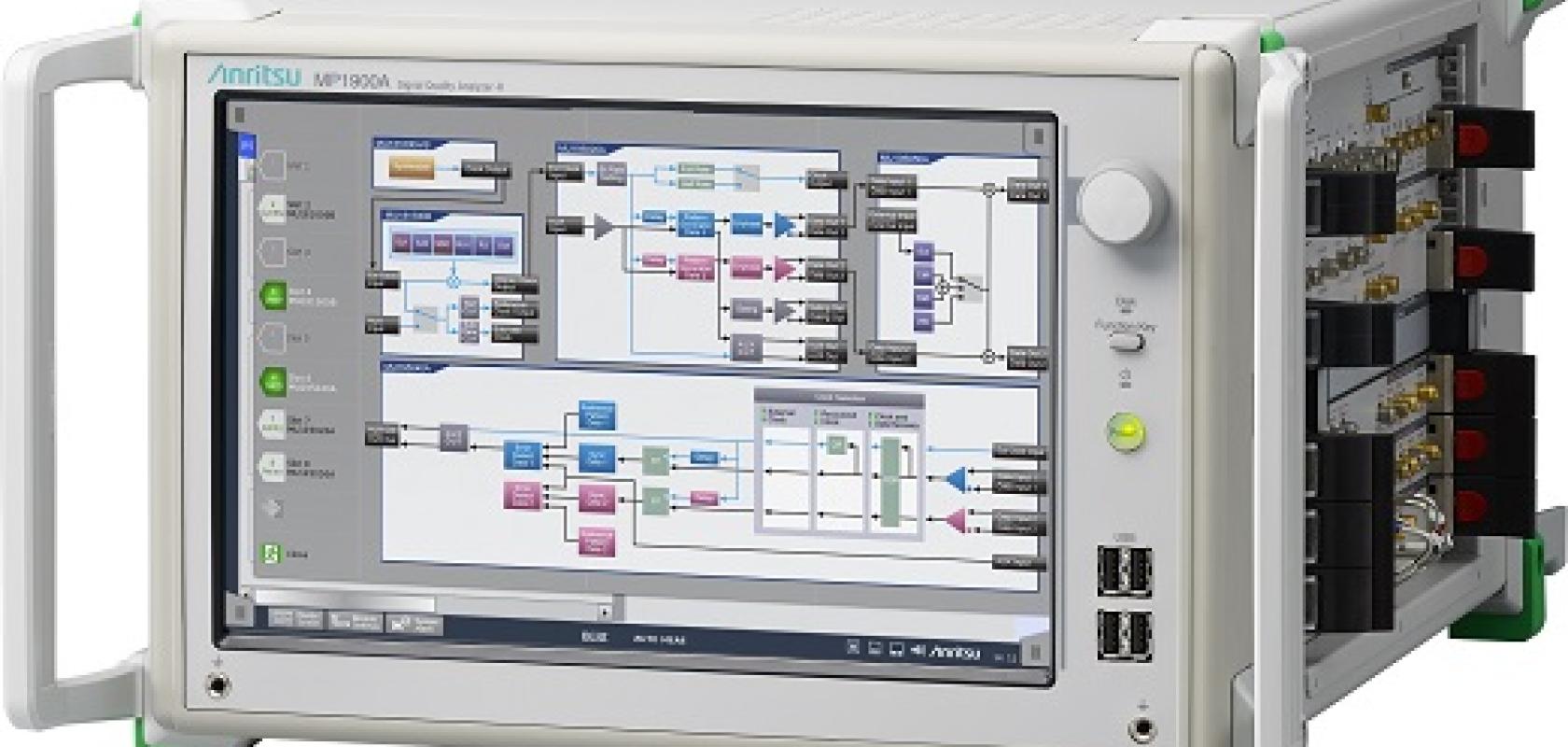Anritsu has released a Variable ISI MU195020A-040/041 option for upgrading the emphasis function of the pulse pattern generator (PPG) in the Signal Quality Analyzer-R MP1900A series, along with the USB Link Training Software MX183000A-PL022 for USB3.0/3.1 receiver test.
Released earlier this year, the MP1900A is a high-performance bit error rate tester (BERT). It has been designed to meet the needs of cloud and data centre operators who need to measure signals across both high-speed optical and electrical interfaces, such as 100G/200G/400G Ethernet, PCI Express, USB, and Thunderbolt (see Anritsu introduces high-performance BERT for the cloud era).
The new upgrade options will allow customers to better measure the effects of transmission path loss and noise resulting from the faster signals used by these interfaces. Using the newly developed Variable ISI option makes it easier to evaluate high-speed interfaces, backplanes, and cables. In addition, USB Link training supports high-reproducibility measurements of the PHY-layer of USB3.0/3.1 devices by controlling the MP1900A.
The built-in PPG supports a 10-Tap Emphasis function for testing the effect of transmission path loss plus jitter and noise addition functions. The Variable ISI option uses the 10-Tap Emphasis function with high and flexible signal controllability to emulate CEI-25G/28G-defined signal path transmission losses which cannot be achieved by utilising an emphasis function with lower number of taps. In addition, Anritsu’s MP1900A can automatically calculate the emphasis settings for compensating these losses based on transmission path S-parameter data. With these new capabilities, test signals emulating the transmission path impairments can be generated easily, allowing the impact of transmission path losses on the device under test to be evaluated simply without testing various PC boards, helping to cut development costs and time.
USB Link Training is important for measuring USB interfaces; the built-in Link Training function supports transitioning to the device evaluation measurement mode, and when used in combination with the LTSSM Log Analysis, it helps cut times for evaluating USB device receivers and supports cost effective and all in one measurement of high-speed interfaces such as PCI Express, USB, and Thunderbolt.

